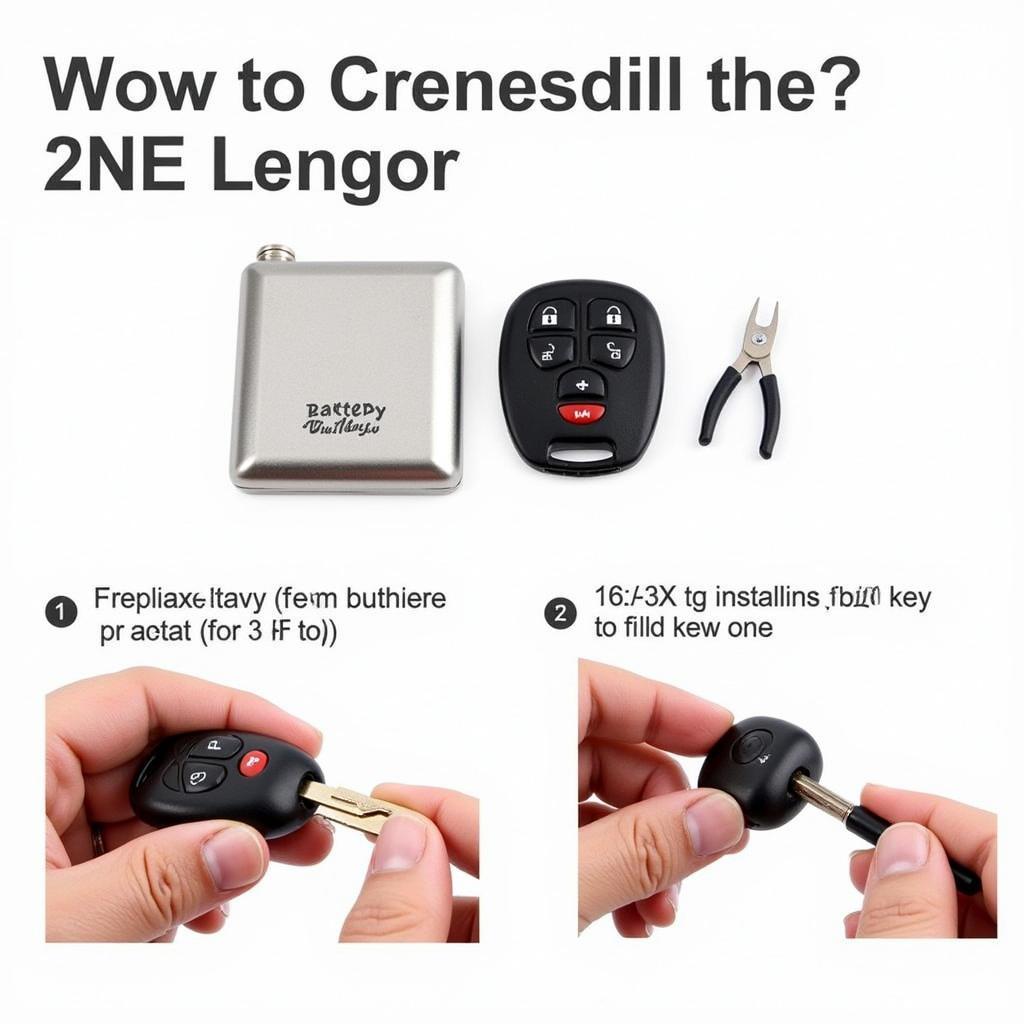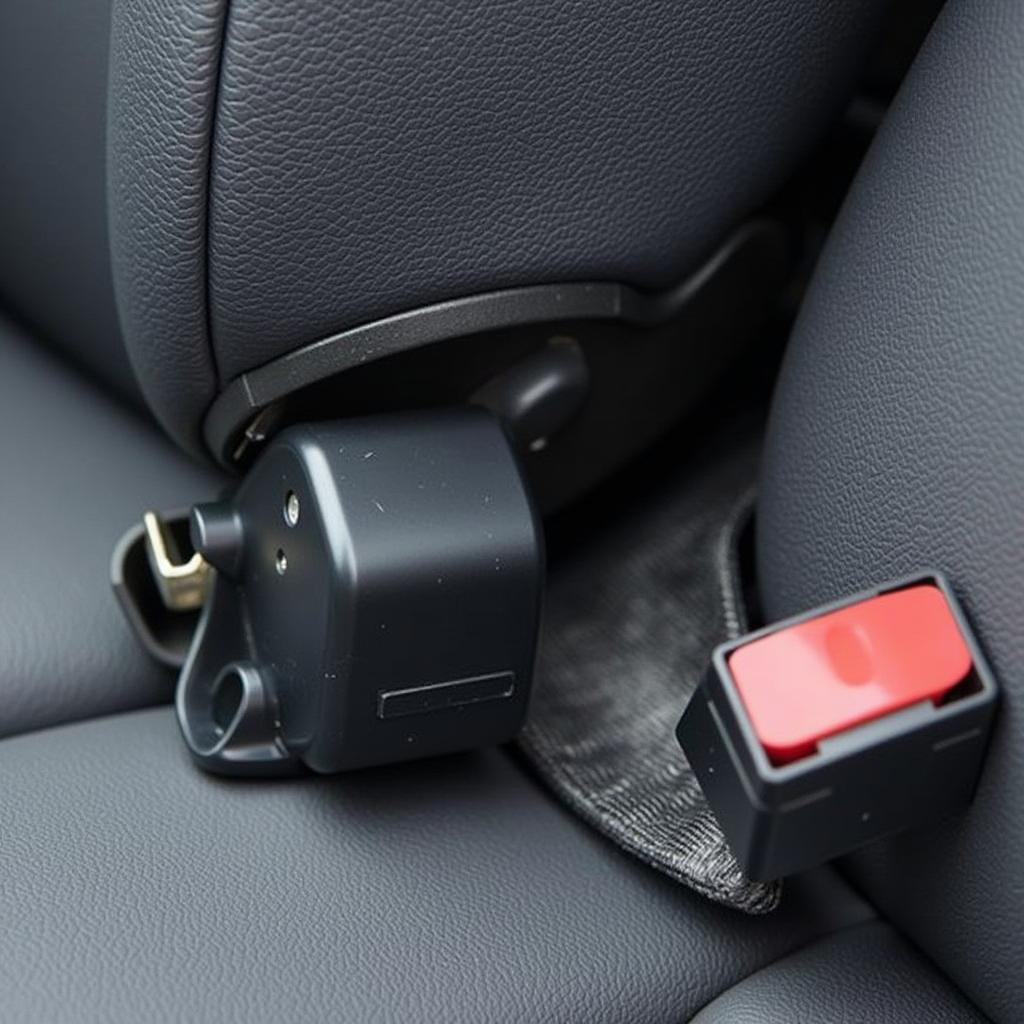The brake warning light on your dashboard is a crucial safety feature in your 2005 Ford F150. When it illuminates, it signals a potential issue within your braking system that requires immediate attention. While it could be something as simple as a disengaged parking brake, it could also point to more serious problems like low brake fluid or a malfunctioning ABS system. This article will guide you through the common causes of a lit brake warning light in a 2005 F150 and provide potential solutions to get you back on the road safely.
Understanding Your F150’s Brake Warning System
Before we delve into the causes, it’s helpful to understand how your F150’s brake warning system works. The system uses sensors to monitor various components, including brake fluid level, parking brake engagement, and the anti-lock braking system (ABS). If any of these sensors detect an anomaly, they trigger the warning light on your dashboard.
Common Causes of a 2005 F150 Brake Warning Light
Here are some of the most frequent culprits behind a glowing brake warning light in a 2005 F150:
1. Low Brake Fluid
This is often the most common cause. Brake fluid is the lifeblood of your braking system, transmitting the force from your foot on the pedal to the wheels. If the fluid level drops too low, it can hinder the system’s effectiveness.
Solution: Check the brake fluid reservoir under the hood. If the level is low, carefully top it off with the recommended brake fluid for your F150. However, if you notice a consistent need to refill, it’s crucial to inspect for leaks in the braking system.
2. Worn Brake Pads
Your brake pads are designed to wear down over time. When they become too thin, a sensor inside the brake pad will contact the rotor, triggering the brake warning light.
Solution: Have your brake pads inspected by a mechanic. If they’re worn beyond the recommended thickness, they’ll need to be replaced.
3. Faulty Brake Light Switch
The brake light switch activates your brake lights when you press the brake pedal. A malfunctioning switch can sometimes trigger the brake warning light.
Solution: A mechanic can test the brake light switch and replace it if necessary. This is a relatively inexpensive repair.
4. ABS Issue
The Anti-lock Braking System (ABS) prevents your wheels from locking up during hard braking, maintaining steering control. If the ABS system encounters a fault, it can illuminate the brake warning light.
Solution: Diagnosing an ABS problem often requires specialized diagnostic equipment. It’s best to consult a mechanic or a qualified technician to identify and repair the issue.
5. Parking Brake Engaged
While seemingly obvious, it’s easy to overlook. If the parking brake isn’t fully released, the warning light will stay illuminated.
Solution: Ensure your parking brake is fully disengaged. If the light remains on, there might be a problem with the parking brake sensor.
When to Seek Professional Help
While some causes of a lit brake warning light can be addressed with simple checks and solutions, others require professional expertise. If you’re unsure about any aspect of your brake system or suspect a more complex issue, it’s always safest to consult a qualified mechanic.
Remember, your vehicle’s braking system is paramount for your safety and that of others on the road. Never ignore a brake warning light.
Frequently Asked Questions
Q: Can I drive my 2005 F150 with the brake warning light on?
A: It’s highly discouraged. Driving with a lit brake warning light could be dangerous as it signifies a potential problem with your braking system.
Q: How much does it cost to fix a brake warning light on a 2005 F150?
A: The repair cost varies widely depending on the underlying cause. A simple brake fluid top-up might cost a few dollars, while a complete brake system overhaul could cost significantly more.
Q: How often should I check my brake fluid?
A: It’s good practice to inspect your brake fluid level at least once a month and top it off if necessary.
This article provides general information about the brake warning light in a 2005 Ford F150. For specific advice regarding your vehicle, consult your owner’s manual or a qualified automotive professional.


